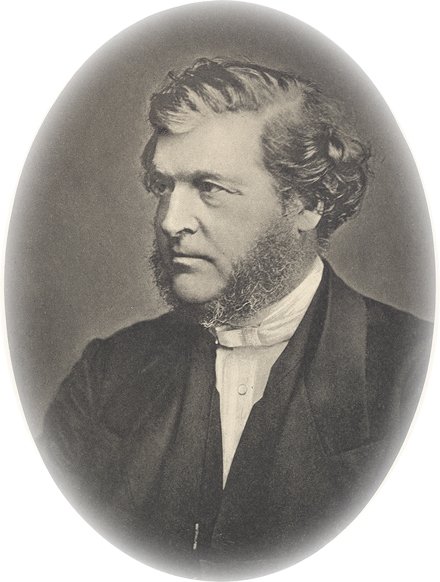Dr. Barton on the Holy Grail
What is the Holy Grail? I sometimes get students bringing newly published books on the Grail to me, excited. Then I read the book, and I give it back to the student telling them that the book is about as factual as Indiana Jones and the Last Crusade, and a lot less entertaining.
You see, the Grail isn't an early Christian symbol at all. In fact it only appears on our cultural radar in a document by a Cistercian writer by the name of Helinandus (d. about 1230) describing a vision, said to have been seen by a hermit in 717, of the dish used by Christ at the Last Supper. The vessel is known by many names, Grail, Holy Grail, Greal, Graal, etc., and is variously identified with the chalice of the Eucharist or the dish of the Pascal lamb, and the theme of a famous medieval cycle of romance. In the romances the conception of the Grail varies considerably; its nature is often only vaguely indicated, and, in the case of Chrestien's Perceval poem, it is left wholly unexplained (owing to the sudden death of the author). The derivation of the word is mysterious, but it may come from the title of Helinandus' work, Gradale. "Gradalis or Gradale means a dish (scutella), wide and somewhat deep, in which costly viands are wont to be served to the rich in degrees (gradatim), one morsel after another in different rows. In popular speech it is also called "greal" because it is pleasant (grata) and acceptable to him eating therein" the monk tells us. Notice that the derivation is from Gradale, not from sangraal, or indeed san- anything!
Apart from Heliandus' account of a vision that ocurred some 500 years before he was writing, the Gail only appears in Medieval Romances - in works of fiction! Most of these date from between 1180 and 1240, and most are French. They are of two kinds, some concerned with the Grail Quest, others with the history of the Grail itself.
In the earliest of the early history tales the Grail is (as Heliandus' account implies), not the cup from which Christ drank at the Last Supper, but the dish from which Christ ate the Paschal lamb. The dish was used by Joseph of Arimathea to collect the blood of Christ at the crucifixion, and therefore it became linked with the Eucharistic cup.
Since the origins of the Grail are in fiction, not in history, and it is not heard of until the late twelfth century, the chances of the Grail actually referring to anything other than a literal eating-dish are slim. Now I'm off to watch Indiana Jones again!
You see, the Grail isn't an early Christian symbol at all. In fact it only appears on our cultural radar in a document by a Cistercian writer by the name of Helinandus (d. about 1230) describing a vision, said to have been seen by a hermit in 717, of the dish used by Christ at the Last Supper. The vessel is known by many names, Grail, Holy Grail, Greal, Graal, etc., and is variously identified with the chalice of the Eucharist or the dish of the Pascal lamb, and the theme of a famous medieval cycle of romance. In the romances the conception of the Grail varies considerably; its nature is often only vaguely indicated, and, in the case of Chrestien's Perceval poem, it is left wholly unexplained (owing to the sudden death of the author). The derivation of the word is mysterious, but it may come from the title of Helinandus' work, Gradale. "Gradalis or Gradale means a dish (scutella), wide and somewhat deep, in which costly viands are wont to be served to the rich in degrees (gradatim), one morsel after another in different rows. In popular speech it is also called "greal" because it is pleasant (grata) and acceptable to him eating therein" the monk tells us. Notice that the derivation is from Gradale, not from sangraal, or indeed san- anything!
Apart from Heliandus' account of a vision that ocurred some 500 years before he was writing, the Gail only appears in Medieval Romances - in works of fiction! Most of these date from between 1180 and 1240, and most are French. They are of two kinds, some concerned with the Grail Quest, others with the history of the Grail itself.
In the earliest of the early history tales the Grail is (as Heliandus' account implies), not the cup from which Christ drank at the Last Supper, but the dish from which Christ ate the Paschal lamb. The dish was used by Joseph of Arimathea to collect the blood of Christ at the crucifixion, and therefore it became linked with the Eucharistic cup.
Since the origins of the Grail are in fiction, not in history, and it is not heard of until the late twelfth century, the chances of the Grail actually referring to anything other than a literal eating-dish are slim. Now I'm off to watch Indiana Jones again!

1 Comments:
that makes since but in many other websites i have visited it said that the holy grail is like you said maybe non exsisting but is the symbollism of his blood line. that the last supper was actually a picture of his wedding and the female looking figure was his secret wife mary m. that some how seems to make sense to me and im in the ninth grade.?. what do you have to say about that?
By Anonymous, at 4:30 AM
Anonymous, at 4:30 AM
Post a Comment
<< Home